|
|
|
...
Frank Aupperle/ Gladiatores / Deutschland
www.gladiatores.de
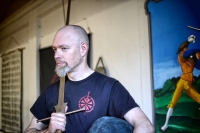
More Details coming soon... |
|
The "Langes Schwert" in the "Codex Wallerstein" Cod.I.6.4º.2
Sven Baumgarten / Gladiatores / Germany
www.gladiatores.de
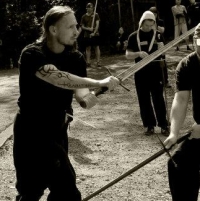
More Details coming soon...
|
The "Langes Messer" in the "Codex Wallerstein" Cod.I.6.4º.2
Thomas Brennauer / Gladiatores / Deutschland
www.gladiatores-muenchen.de
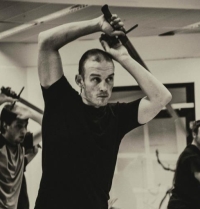
More Details coming soon... |
|
Civil self defence after Dürer/MS 26-232 (1512)
Daniel Eckert / Hohentwieler Klingenkunst & Gladiatores / Deutschland
www.www.hohentwieler-klingenkunst.de
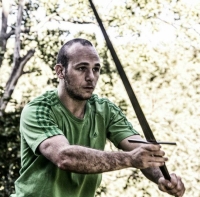
More Details coming soon... |
Longsword from the Kölner Fechtbuch
Keith Farrell / Academy of Historical Arts / Scotland
www.historical-academy.co.uk/
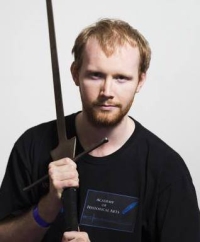
The MS Best.7020 is an interesting manuscript dating from the 1500s.
It contains some similarities to the Marxbrüder fencing syllabus described by Hans Sachs in 1548, although the content of the manuscript appears to be somewhat unique and does not appear to be a part of the Liechtenauer tradition like so many of the other manuals.
However, some lines of text are similar to Liechtenauer's verses.
The lesson will look at some of the longsword material from this manual and will note the similarities and differences compared to the Liechtenauer tradition of unarmoured longsword fencing.
Sources: - Anonymous, "MS Best.7020 W*150", early 1500s. - James Wallhausen, "The Fight-Lore of the Long Sword from the Kölner Fechtbuch (MS Best.7020)", 2012.
Difficulty Level: This is suitable for medium level fencer, since it is not inherently difficult, but breaks some of the normal rules of how to fence and how to move your body!
Equipment: - fencing mask (preferably with back of head protection), - longsword (preferably a long and light feder, or a synthetic with elongated pommel), - padded gloves (giving a sufficient level of protection).
Duration: 2-3 hours |
|
The Sickle – Peasant's Weapon or Example of a Metasystem of Fencing?
Julia Graef / Dimicator & Gladiatores / Germany
www.dimicator.com
www.gladiatores.de

(Paulus Hector Mair's sickle with longsword, dussack and/or dagger)
Description: Since the sickle is such an extraordinary weapon with a very special feature, there will be a short introdution in its use. The second part will deal with several techniques appropriate for sickle as well as other weapons. In this regard, the question will be mooted, why Paulus Hector Mair included the so-called "peasants' weapons" in his fencing compendium.
Equipment: mask with back of head protection, throat protector, thin gloves; its recommended to wear long sleeves or a thin forearms protection to make it more comfortable
Duration: 1,5h
Limited participants: There will be 12 sickles to lend.
|
A Sabre Duell from 1840
Marcus Hampel / Hammaborg / Germany
www.hammaborg.de

In this workshop, the necessary basic skills will be taught to be prepared for a sabre duel.
Alongside angle, walking, parades, and strikes, several exercises will give the fencers an understanding of the important topic of attack-parade-riposte, before tackling a regular duel.
The first part of the course will be sweaty, the second one exhausting for your head!
Sources:Theoretisch-praktische Anleitung des Hau-Stoßfechtens (1838) (http://goo.gl/3t1hv0) and Duell-Codex (1836) (http://goo.gl/35YbiP)
Equipment:sabre or single-hand weapon like sword, long knive etc., masks or thick gloves are recommended but not necessary
Duration: 2h
www.happy-fencer.de |
|
Attacking in counter time and a different types of angles usage.
Martin Janicina / Zoldnieri / Slovakia
www.zoldnieri.sk
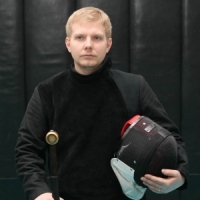
We will show some examples of how to attack in counter time, how to provoke the opponent to attack us while using this for our counter attack. We will also learn some basics (advantages, disadvantages) of how to use angles while attacking or provoking an opponent.
Sources: Fabris, Capo Ferro, Giganti
Duration: 1,5 - 2h
Equipment: protection of head (sport fencing mask), flex blade rapier (preferably longer blades), dagger, fencing vest
Limited participants? No |
Langes Schwert – Nahkampf/Longsword - Close Combat
Ingulf Kohlweiss / Indes / Austria
www.indes.at
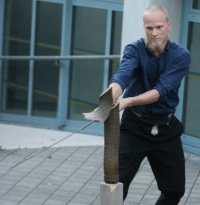
What to do in a fight when you get close to your opponent?
Your blade may only be used in a restricted way to threaten or wound your opponent.
Very often it is reasonable to take one hand off the grip so that new possibilities may open up.
Fencing manuals from the 14 - 17th century show various of these close combat techniques: pommel strikes, armbars and armbreaks, half swording, disarms as well as throws.
The aim of this workshop is to train entry and execution of some of these techniques.
Sources:different sources following the Liechtenauer tradition
Equipment: long sword, preferably with fencing mask (but this is not necessary)
Duration: 1,5 - 2h |
|
German Longsword: How to be Fast, Effective, & Safe
Anton Kohutovic / Fencing guild of Trnava, TSC / Slovakia
www.gesellschaft-lichtenawers.eu

“This must be done with speed and rather
with one strike than with four or six which
will again leave you hanging and giving the
opponent a chance to hit you.”
- Hs. 3227a
The workshop will deal with the essence of each exchange. Proper attack. There is no need for complex or sophisticated techniques or even counter techniques when we encounter only lousy cuts and thrust. Although long exchanges attract often applause of audience, winning in less actions (ideally in one) is more desirable and mainly safer. We will try learn some ways how to gain this goal.
Topics:
Footwork and body posture
Oberhaw mechanics
Vorschlag
Zornhaw ort
Ochs and zwerch
Thrusting mechanics
Schiller
Workshop by Anton Kohutovic( for intermediate to advanced students)
Assistant Martin Tibenský
Length: 2h+
Participants amount: cca. 25
Requirements: Mask, throat protection, chest protection (jacket), safe longsword (ideally folded point)
|
spanish rapier
Peter Koza / Magisterium / Slovakia
www.magisterium-europe.eu/

Details coming soon... |
|
Bajonettfechten
Markus Kölblin / Gladiatores / Germany
www.gladiatores.de

Details coming soon... |
Die Königin des Schlachtfelds der Spiess
Reiner Kern / Gladiatores / Deutschland
www.jaekleins-spiesse.de

Der lange Spiess beherschte im 16. Jarhundert die Schlachtfelder Mitteleuropas. In diesem Workshop soll der allgemeine Umgang mit dieser Waffe und im besonderen der Drill mit einem Haufen Spiesser näher betrachtet werden.
Der Spiess Herkunft und Verwendung
Die Handhabung des Spiess nach Wallhausen „Kriegskunst zu Fuß“
Praktischer Spiess-Drill nach BOL (Bund oberschwäbischer Landsknechte)
Schwert gegen Spiess
Duration: 2h
Requirements:
| |
Meyers Long Sword
Roger Norling / Gothenburg Historical Fencing School
& Meyer Frei Fechter Guild / Sweden
www.ghfs.se
www.freifechter.com/

Based on Meyer, but often reflected against earlier treatises like 3227a and Ringeck.
Duration: 4h
More Details coming soon... |
To be announced
Martin Paetzel/ Gladiatores / Deutschland
www.gladiatores.de

...Details coming soon..
|
|
To be announced
Frank Rodriguez / S.I.T.-MMA / Germany
www.sit-kampfsportschulen.de

...Details coming soon..
|
Nachreisen – das unverstandene Fechtstück
Torsten Schneyer / Zornhau / Germany
www.zornhau.de
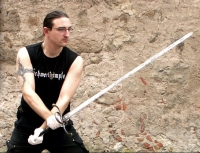
An understanding of principles of fencing that is close to reality – The example of "Nachreisen" (After-traveling) from Cod. 44 A 8
The interpretation of historical fencing pieces often works according to book: You read the text, you reconstruct the content, you have a light bulb moment, you teach it to others in the next lessons.
In doing so, not only mistakes in interpretation can slip in, but also is this piece becoming a mere pattern that only lives on as a rudiment in the regular lesson.
On the basis of "Nachreisen" (After-traveling), Torsten Schneyer will explain why this piece is not a single technique, but a fundamental principle, which is exemplified by the manuscript's author with the help of many seemingly different "sub-pieces".
Torsten also illustrates why a simple reenactment of the piece is not unsufficient for a valid interpretation. Furthermore, he will show how timing, speed, and hardness/softness have an effect on the dynamics and the interpretation.
Sources: Cod. 44 A 8
Equipment: Fencing mask, light gloves and a longsword. A complete equipment for sparring is welcomed, but not necessary.
If there are enough armed fencers, we'll build two groups
Duration: 2h
|
|
Hellebarde in der modernen "SV"
Michael Thrun / Hanseatischen Akademie für historische Fechtkünste / Deutschland
www.hanse-fechten.de/
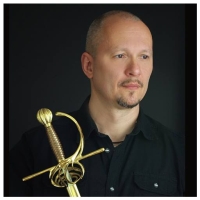
Historische Waffen in der Moderne
Welchen Sinn haben historische Waffen in der Moderne? Durch seinen Kontakt zur Schweizergarde und einem Seminar im Vatikan stellte
Michael Thrun sich die Frage wie die Sicherheit durch eine z.T. mit historischen Waffen ausgerüstete Militärtruppe gewährleistet werden kann.
Die Anforderungen gerade beim Personenschutz des Papstes sind enorm hoch. Zu diesem Zweck wurden verschiedene Szenarien entwickelt und
mit Angehörigen der Schweizergarde in einem Seminar zur Handhabung der Hellebarde durchgespielt. Diese Szenarien und die sich daraus
ergebenden Konsequenzen sowie der Sinn historischer Waffen in solchen Szenarien werden zusammen mit Publikum und Teilnehmern durchgespielt.
|
Ital. Rapier
Petr Vytopil / Magisterium / Tschechien
www.magisterium-europe.eu/
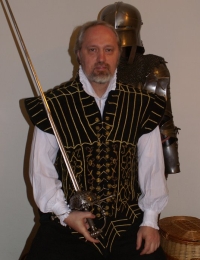
...Details coming soon..
|
|
|

